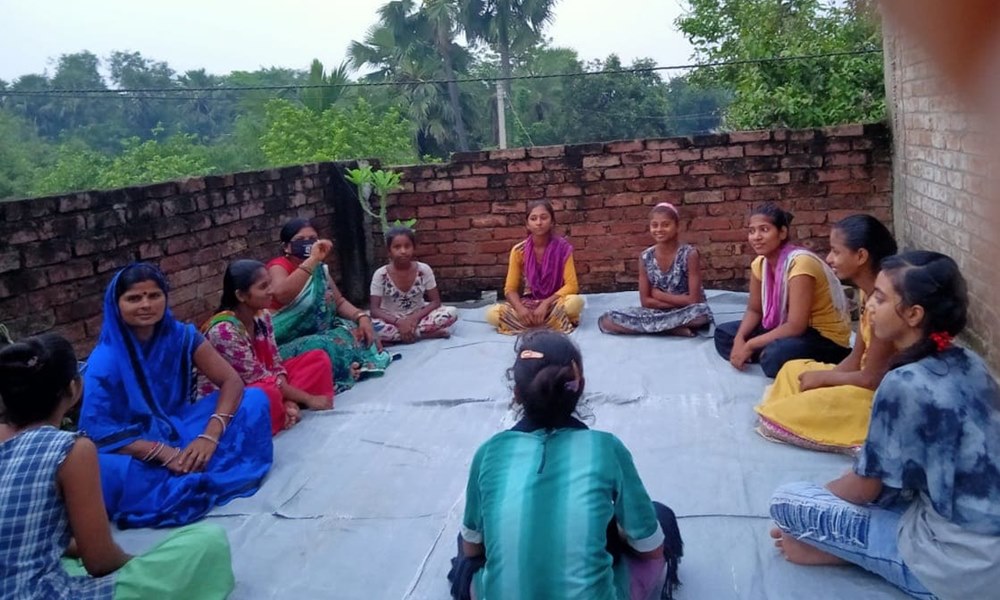
How 15-Yr-Old Chandni From Bihar Prevented Her Own Child Marriage & Stopped Three More
Bihar, 13 July 2020 11:17 AM GMT | Updated 15 July 2020 6:36 AM GMT
Creatives : Abhishek M |
" An engineer by profession, Abhishek is the creative producer of the team, graphic designing is his passion and travelling his get away. In more ways than one, he makes the content visually appealing."
Chandni began to understand the issue of child marriage more deeply, where it stemmed from and why it needed to stop. Feeling a renewed sense of empowerment, she was able to articulate her aspirations clearly and knew exactly what she wanted to do.
Her parents were married as children and as the eldest of seven siblings, it was now Chandni's turn to keep up with the age-old practice. For the tiny hamlet of Damodarpur Mahuli in Samastipur, Bihar, child marriage and child labour have been the norm. In any case, as a child to daily wagers, a lot of the household burden was upon her to deal with.
It took a while for Chandni to be convinced to join of the five week 'Samvidhan Live! Be a Jagrik' journey. Through the lived experiences weaved into tasks around fundamental rights and duties, this journey lets adolescents get a distinct flavor of what it really means to live by them in their everyday lives. It also speaks to Child Rights under the framework of the United Nations Convention on the Rights of the Child.
A UNICEF report titled 'Ending Child Marriage, A profile of progress in India' states that one in three of the world's child brides live in India. Of the country's 223 million child brides, 102 million were married before they turned 15. Chandni could have been one among the 22 million girls in Bihar who were married before they turned 18 (As of 2019).
Jawahar Jyoti Bal Vikas Kendra (JJBVK) is a youth engaging organisation working to empower 30,000 adolescents and youth by building their leadership capacities. They facilitated this experiential journey with close to 300 adolescents in Samastipur Bihar.
During JJBVK's mobilization drive to identify adolescents who would undergo the journey, Chandni expressed her concerns about her inability to understand the tasks or the game hindering her participation, especially given the lack of support from her family.
But something shifted on the orientation day. When participants were first introduced to the basic tenets of the Constitution of India, the Preamble, Child Rights and the rules of the game, all of her apprehensions seemed to dissipate gradually as she started to feel more confident about herself.
From then on, every Jamghat, a space for sharing reflections and enhancing capacities; saw Chandni take the lead. She organized her peers into groups and facilitated deep dialogues on a range of issues faced by the adolescents in their community.
As she looked at her life through the lens of her own fundamental rights and duties, she developed a sense of ownership and responsibility for changing what had seemed nearly impossible before. She began to understand the issue of child marriage more deeply, where it stemmed from and why it needed to stop. Feeling a renewed sense of empowerment, she was able to articulate her aspirations clearly and knew exactly what she wanted to do.
The first step was to make her family understand her perspective. For this, she engaged in difficult but mature conversations with them and made sure that they understood where she came from. Chandni was able to demand her right to life, survival and development as a child, complete school and study further.
Her Jagrik journey enabled her to experience what could change when a young person took charge of their own story. She decided to facilitate similar experiences for other adolescent girls who went through similar struggles.
Advocating to stop the practice of child marriage in her village, she convinced many people to see the value in what she was saying. This led to two adolescents being freed of child labour and being given the opportunity to complete their studies. Three other child marriages have been prevented since.
Over 5000 adolescents like Chandni joined 173 institutions across 15 states in India and played the 'Samvidhan Live! Be a Jagrik' game. What started out as a learning and leadership journey on constitutional literacy has now become a movement of active citizenship where awakened active citizens – 'Jagriks' are moving the constitution out of bookshelves and classrooms and onto the streets.
Given the right opportunities, one Chandni could bring about such a significant change in her life and that of the others around her. Imagine the country we would live in if all of 600+ million young people in India had spaces that nurtured them, spaces where they felt truly empowered!
Let me add here that there is now no mention of her marriage till Chandni says she is ready.
Do you happen to know more Jagriks like Chandni? Share your stories with us via email at info.commutiny.in or share them on social media with the hashtag #MainBhiJagrik.
 All section
All section















